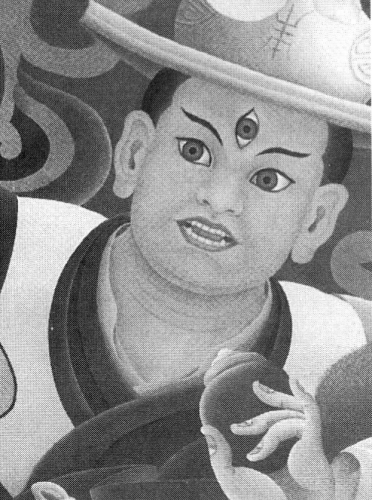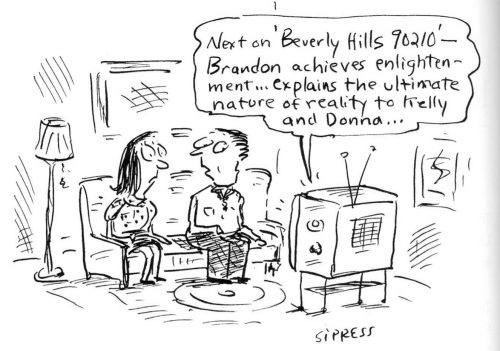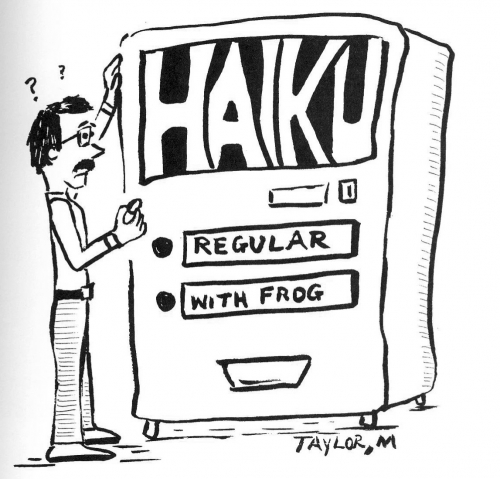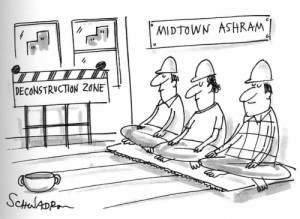The Dorje Shugden Debate, Part II

Shugden controversy. You have once again proved your commitment to open dialogue and fearlessness and have raised the controversy to the level of an honest debate—a time-honored tradition of settling disputes in Tibetan Buddhism.
Within the debate, we must ask the question: Are Tibetan Buddhism and the Tibetan political cause inseparable? As Buddhists in the Tibetan tradition, are we automatically conscripts, willing or otherwise, in the Dalai Lama’s political battle? Where is the line drawn between our loyalty to Buddha and our loyalty to the worldly political goals of the Tibetan government-in-exile?
This tug-of-war between spirituality and politics is reflected in the dual roles of the Dalai Lama himself. Is he a spiritual leader or a politician? True, it has been in his interest to blur the distinction, but no leader is immune to the tyranny that inevitably results. The Dalai Lama is making spiritual decisions to address political concerns. The “unity” of the Tibetan people is illusory, at best, if it is achieved through religious oppression, documented intimidation, and spiritual degradation.Where, in the maturing process of the American Buddhist movement, do we infuse the wisdom of “separating of church and state”?
I go for refuge to the Three Jewels daily, try to cultivate a peaceful mind, and dedicate this precious human life to benefit others, but I have a powerful and helpful protector who is currently out of favor with those in power. If this type of authority continues to be wielded, causing harm to Western practitioners, all students of Tibetan Buddhism must ask themselves: Am I next? Is my beloved practice the next one to be sacrificed on the “altar” of worldly political aims?
Linda Fane
Seattle, Washington
You have done well to bring to light the Dorje Shugden situation. Certainly His Holiness The Dalai Lama should be supported by all Buddhist groups for his ban on Shugden worship. This is important not only for Tibetan Buddhism but also for the future of all Buddhism in the West. The practice of “life entrustment” in any deity is not Buddhism and should not be supported as such. To quote Buddhadasa Bhikkhu, “If we take those things that agree with our defilements rather than let ourselves be guided by mindfulness and wisdom, then spiritual life becomes a matter of superstition, of rites and rituals, and of making merit by rote or to insure against some kind of fear, and there is no contact with real Buddhism.”
Buddhism has no need of protectors; it either stands or falls by the truth of the Buddha’s teachings alone, and for those teachings one takes refuge in the Triple Gem. Great teachers can make mistakes. Greater teachers can give them up.
John A. Perks
Washington, D. C.

I greatly appreciated Stephen Batchelor’s account of the background of the Dorje Shugden feud. It set the current controversy in a historical context, about which I and, I’m sure, many others were largely ignorant. Unfortunately, this is a fight in which both sides have suffered, and it is hard for me to believe that any of the players have acted wisely. The only people who may draw any comfort from what is happening are members of the Chinese government.
Although I believe that the Dalai Lama can be criticized for his handling of the matter, as a former student of Geshe Kelsang Gyatso, I’m ina better position to comment on the Dorje Shugden supporters’ side than on that of their opponents.
Some of Geshe Kelsang’s actions—such as organizing public protests against the Dalai Lama—appear to be expressions of a woeful ignorance about the media, the nature of public perception and the world in general. While Geshe Kelsang has been exposed to the West for over twenty years (and is now a British citizen), one has to wonder what he has managed to learn during that time about the broader culture in which he now lives.
Unfortunately, Geshe Kelsang, like so many other Asian spiritual teachers, has been shielded from society by overprotective students who naively imagine that their teacher has little if anything to learn about the world. The dharma centers in which they live, are far from being true meeting places between East and West, end up becoming strange amalgams of the two that lack any real cultural foundations.
The irony is that it is the students who sell themselves short by going the greater distance in bridging the culture gap—a task that should in fact be equally placed on the shoulders of the teacher. The end result is Westerners who lose sight of their own cultural roots and resources while engaged in a vain attempt to remanufacture Buddhism in a contrived form of purity. At the same time, trapped in the insular environment of a Western dharma center, the lama becomes isolated from his own people and culture and their leveling influence. Surrounded by a cadre of devotees, he needs—but lacks—the help of a wise fool who can expose the folly that everyone else around him refuses to see.
Behind the machinations of this particular medieval drama, I see a larger story—one that seems to get replayed in spiritual groups the world over. On the one hand, a group of people discover inspiration, a profound sense of purpose, and a conviction that they are devoting their lives to a matter of ultimate significance (such as “releasing every living being from suffering”), but then the very sense of unity that springs from this common purpose ends up sustaining divisions which isolate the pure from the impure, the enlightened from the ignorant, and the saved from the damned. Cosmic vision degenerates into a factionalism whose parochiality is sadly evident to all but those on the inside.
But if there is a lesson to be drawn from all of this, my hope is that we do not seek refuge in cynicism. Might it be that having physically or metaphorically traveled the world in search of enlightenment, we can now pay closer attention to that stock of wisdom buried in our own past; that we can fully engage in a complex and sometimes painful process of self-inquiry; that wecan start to awaken to, rather than try to escape from, our own cultural conditioning? After all, who are we, born and raised in America or Europe, that we would choose to get enmeshed in a feud that dates back to rivalry between two Buddhist monks in seventeenth-century Tibet?
Paul Woodward
Corte Madera, California
It is interesting and disturbing that a bookstore in San Diego has responded to the Dorje Shugden controversy by removing Kelsang Gyatso’s books from the shelves! This act of censorship is really an act of violence. It stifles freedom of expression, and it says that people aren’t smart enough to make up their own minds. I suggest that bookstores should hang flyers on their bulletin boards alerting customers to the controversy and permitting them to decide for themselves whether to purchase Kelsang’s books. Banning books is an act of controlling the writer and the reader.
Paul Schneider
San Diego, California

Thank you for your excellent articles on Dorje Shugden, which help illuminate the issues in this unfortunate controversy. I am grateful for the historical and cultural context surrounding Shugden worship, but I remain curious about another aspect of the Dalai Lama’s ban. What is the origin and nature of the Nechung Oracle? Why does the Dalai Lama invest such trust in this figure? Further, what is the place of oracles in Mahayana Buddhism, generally?
Nash Mayfield
Macon, Georgia
Editor’s response: The contemporary use of oracles in Buddhism seems to be a uniquely Tibetan practice, derived presumably from Tibet’s pre-Buddhist culture. Oracle divination also may have been imported from India. For further reading, see the chapter on tbe Nechung Oracle in John Avedon’s In Exile from the Land of Snows (HarperCollins).
Unholy matrimony?
What is all this sentimental focus on monks performing wedding ceremonies and even joining in “holy” union themselves? Must the democratic ethos dilute everything? Is it not enough that the majority of human beings are obsessed with coupling up? To those seriously exploring single living, “Tying the Knot,” a section on all sorts of unions (even Mr. and Mrs. Abbot?) seems rather preposterous and downright disheartening.
After all, Buddhism is (was?) one of the few respectable options available for celibate living. Yet the value and importance of a non-familial lifestyle has apparently become very confused. Note the number of “ex” monks and nuns who cannot wait to get married. Something essential seems to get missed. This is not to do with rules or morality, but integrity, vitality, honesty.
There is a popular myth worldwide that people have matured and can now handle both the complexities of mixing identities with another and give full attention to the subtle mystery. Yet a quick look at the state of our overcrowded world, the difficulties found in living together or even meeting, and the growing challenge to find peace anywhere points to quite the opposite. In fact, the presence of mind required for simple, vital living is exceedingly rare.
Of course, monastic life is not necessarily the answer. One suspects that there is more often suppression rather than acknowledgment there of the deep disturbance that is the modern psyche. However, those choosing celibacy could be accorded some sort of respect, sobriety, and celebration and not be expected to accept all the popular notions. Much research is called for in the field of healthy living arrangements for single, focused living.
Sally George
Sarasota, Florida


Image 4 and Image 5: Harley Schwadron.
It was with great interest that I read your article on Buddhist weddings in America: “Tying the Knot.” I too was married in a Buddhist ceremony.
The ceremony was a mixture of traditional American customs and Japanese Zen Buddhist liturgy. I remember standing at the altar in the dharma hall with my best man by my side, the room full of family and friends, and beholding my bride walking down the aisle escorted by her father. The guests chanted the Heart Sutra in Japanese; my mother kept and framed her copy, and it now hangs on my living room wall.
Now my wife and I are going through a divorce. I find zazen a healthy way to deal with this ordeal and am very grateful to the Three Treasures: Buddha, Dharma, and Sangha. Our ten-year-old daughter has taken the Heart Sutra off the wall and we chant it together. Kan Ji Za Bo Sa . . .
Perhaps you should do an article on divorce entitled “Untying the Knot.”
Ben Mayock
Blyth Spirit
I am writing you to express my appreciation for Roshi Robert Aitken’s all-too-briefremembrance of R. H. Blyth. I first became familiar with Mr. Blyth’s books while serving in the army in Korea in 1968. I was at that time just becoming interested in Buddhism, and his books made a powerful and lasting impression. Ever since that time, I have considered Mr. Blyth to be my oldest and dearest dharma friend.
It is a great pity that so many of his books are out of print and unknown to the present generation of dharma students. I have often thought that if I had only a year to live, I would want to spend some of that time reading Mr. Blyth’s books. Now if someone out there would do us a favor and write a biography of this man’s life, we could all share in the joys of his biting wit and deep insight.
George Bourke
Jackson, Michigan
American Cheese
I love all this talk of Buddhism in the media. The Time article and others like it now conclusively prove that even a non-proselytizing religion like Buddhism is no longer immune to the American celebrity machine. As the Frankfurt School of thinkers explained decades ago, late American capitalism turns everything into commerce. And in a media-driven culture, the tried and true way to make something commercial is to throw a star behind it. Allen Ginsberg understood this. Philip Glass understands it. And now even Martin Scorsese understands it.
As a result of its canonization by the bicoastal liberal elite, American Buddhism is now a hip fad. A new cause with oodles of cachet. And soon, like every other pet cause of the liberal elite—say AIDS awareness and animal rights—American Buddhism will become an industry, needing cash and converts to keep itself afloat.
And as it justifies its structuring and fund-raising and marketing and star-baiting as part of its “maturing,” it will slowly lose its fire. It will become a kind of Lutheran Scientology with Twelve Step rhetoric thrown in, but with better aesthetics. A Church of Buddhist Science for folks who want to hear the dharma, but don’t want to actually experience it.
Alas, true Buddhists don’t appear in Time magazine. Or at Tibet House galas. Or in films about Buddhism. Because true Buddhists don’t open their mouths. True Buddhists don’t draw attention to their “practice.” Where I come from, that sort of spiritual showmanship is considered “cheezy.” Which means that Phil Jackson is cheezy. That Beastie Boys dude is cheezy. And God knows Courtney Love is cheezy. And every time I open my mouth about Buddhism, I am cheezy too. How American.
James Marshall Crotty
Publisher, Monk, The Mobile Magazine
Reality Bites Back
As a young Buddhist in North America, I am totally baffled as to why people—or, to make a generalization, older dharma students—are so self-righteous regarding the fact that famous actors, musicians, and athletes are going public with their Buddhist affiliations.
In my sangha, part of our meditation is establishing our motivation, thanking our past, present, and future teachers. In an age when kids are solving their problems with guns and comforting themselves with drugs and alcohol, I think twenty-year-olds will find the dharma an easier chunk to bite if it comes from the mouths of their idols.
Clair Berland
Vancouver, British Columbia

Pet Project
In your Spring 1998 issue there was a news item about a person named Phra Sunthorn Watanakorn, abbot of Watklang Temple in Thailand. It said that due to economic problems, Phra Sunthorn was having problems properly feeding all the animals who live at the temple. As an animal lover and follower of Buddhism, this deeply disturbs me. I belong to several animal rights groups so that I can help the innocent creatures of the world. Please send me the address of this Buddhist temple in Thailand so I can make a financial contribution to help feed these animals.
Peggy Cook
Baltimore, Maryland
Editor’s note: We received many letters asking how readers could help the abbot of Watklang Temple feed the dogs living there. If you would like to help, contributions of bank checks or money orders may be sent to:
Watklang Temple
c/o Phra Sunthorn Watanakorn
Ban Dan
Ayutthaya Province
Thailand 13250
Weaverville-La
According to local lore here in Trinity County in the mountains of northern California, the location of the novel Shangri-La was based on the town of Weaverville—which really looks like this postcard. And in 1998 the town still boasts no traffic lights. The Trinity Alps are wild, beautiful, and inspiring. In fact, Chagdud Rinpoche was inspired to set Rigdzin Ling/Chagdud Gonpa Foundation here in Junction City at the base of these mountains.
Laurie Lingemann
Junction City, California

Practice What You Preach
There has been in recent years much justifiable condemnation of the Chinese government for its repressive policy in Tibet, not only by Buddhist adherents, but also by broader human rights groups. One of the bases of Buddhist practice is the practice of compassion. Therefore it is somewhat peculiar that the political compassion extended to Tibet is not and has not been extended to other repressive regimes—those in South and Central America, to Indonesia for its actions in East Timor, to many of the former and present African countries. I do not see much compassion extended to the many millions of our own people and those others immigrating here, many of them children, who are in extreme poverty in increasing numbers. It is only in the case of Tibet that we are in our compassion consonant with the foreign policy of our government. Perhaps some wise reflection on these matters is in order.
Irving Stein
Oakland, California
Free Advice
In response to the Resource Guide to Free Dharma, we would like to inform your readers of several other U.S. meditation centers that operate on a donation basis. The four centers for vipassana meditation in the tradition of Sayagji U Ba Khin as taught by S. N. Goenka of India offer ten-day vipassana courses at least once a month. Meditation instruction, room, and food are provided for all students without charge. Expenses are met through donation from people who have completed at least one course with S. N. Goenka or authorized teachers. Further information about vipassana as taught by S. N. Goenka may be obtained from:
Vipassana Meditation Center
P.O. Box 24
Shelburne Falls, MA 01370
Phone: 413.625.2160
Fax: 413.625.2170
California Vipassana Center
P.O. Box 1167
North Fork, CA 93643
Phone: 209.877.4386
Fax: 209.877.4387
Southwest Vipassana Meditation Center
P.O. Box 190248
Dallas, TX 75219
Phone: 214.521.5258
Northwest Vipassana Center
P.O. Box 345
Ethel, WA 98542
Phone: 360.978.5434
Fax: 360.978.5434*00
www.dhamma.org
Harry and Vivian Snyder
Mill Valley, California
Thank you for subscribing to Tricycle! As a nonprofit, we depend on readers like you to keep Buddhist teachings and practices widely available.